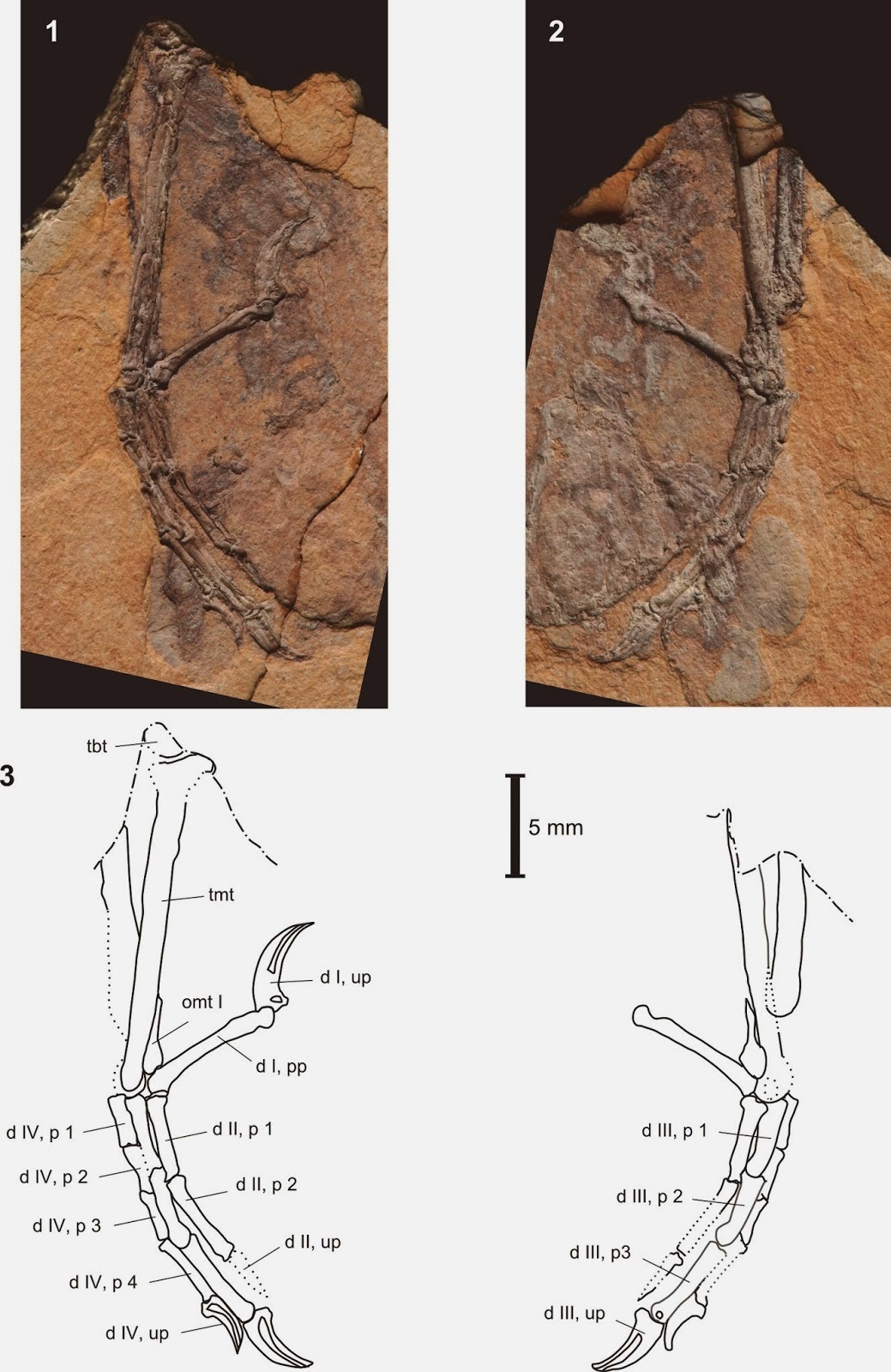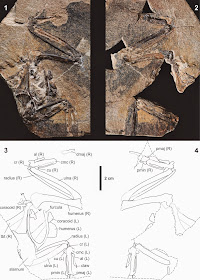Galliform Birds (Pheasants, Chickens etc.) are a successful and
widespread group today, with over 300 described species from around the world.
Their fossil record dates back to the Early Eocene, when the first members of
the group appeared in North America. Members of modern groups first appear in
the Late Oligocene, and the group become particularly common in Pleistocene
deposits. The earliest Galliformesare thought to have been closely related to
the early Anserformes (Ducks and Geese).
In a paper published in the journal Palaeontologia Electronica in October 2014, Teresa Tomek, Zbigniew Bochenski and Krzysztof Wertz of the Instituteof Systematics and Evolution of Animals of the Polish Academy of Sciences and Ewa Swidnicka
of the Department of Palaeozoology at the University of Wrocław, describe a new
species of Galliforme Bird from the Early Oligocene Jasło limestone of the Krosno
Formation at the abandoned brickyard at Sobniów, which is thought to be between
28.5 and 29 million years old.
The new species is named Sobniogallus albinojamrozi,
where ‘Sobniogallus’ means
‘Sobniów-cock’ and ‘albinojamrozi’
honours Albin Jamróz, who found the specimen from which the species is
described. The species is described from a single specimen, preserved as part
and counterpart on a split limestone slab, and comprises an articulated
skeleton of a Quail-sized Bird, lacking the head and legs.
Sobniogallus albinojamrozi, specimen from Sobniów,Poland, early Oligocene (top) and
interpretative drawings (bottom). (1)and(3) main slab; (2) and (4)counterslab.
Left (L)and right (R) elements are indicated. Abbreviations: al - phalanx
digiti alulae, cmc – carpometacarpus, cr – oscarpiradiale, cu – oscarpiulnare,
dmaj – phalanx distalisdigitimajoris, pmaj – phalanx proximalisdigitimajoris, pmin
–phalanx digitiminoris, tbt – tibiotarsus, vr – vertebrae. Tomek et al. (2014).
Sobniogallus albinojamrozi is clearly a Galliforme Bird, but does not appear to belong to any
previously described group of Galliformes, living or extinct, and retains some features
more typical of Anserforme Birds, leading Tomek et al. to conclude that it is probably an early offshoot within the
group, and not closely related to any living form.
See also…
Birdlife International published an assessment of the conservation status of 350 newly described Bird Species for International Union for the Conservation of Nature's Red List of Threatened Species on
24 July 2014, the first such assessment by the organization...
Digenean Flatworms are parasitic Helminth Flatworms that typically have
two or more hosts in their life-cycle. Their primary host is usually a
Vertebrate, where the Flatworms reproduce sexualy with eggs being
released in excreta. These eggs are then consumed by the...
 A preserved Passerine Bird’s foot from the late Oligocene of Poland. Passerines (Perching Birds) are the most numerous and successful group
of Birds in the modern world, with over half of all known Bird species
being Passerines, including Finches, Thrushes, Sparrows, Warblers and
Crows. Despite their success the group do not have an extensive fossil
record, largely due to their small and delicate bones. The oldest
putative Passerine fossils are from the early Eocene of Australia.
A preserved Passerine Bird’s foot from the late Oligocene of Poland. Passerines (Perching Birds) are the most numerous and successful group
of Birds in the modern world, with over half of all known Bird species
being Passerines, including Finches, Thrushes, Sparrows, Warblers and
Crows. Despite their success the group do not have an extensive fossil
record, largely due to their small and delicate bones. The oldest
putative Passerine fossils are from the early Eocene of Australia.
Follow Sciency Thoughts on Facebook.



